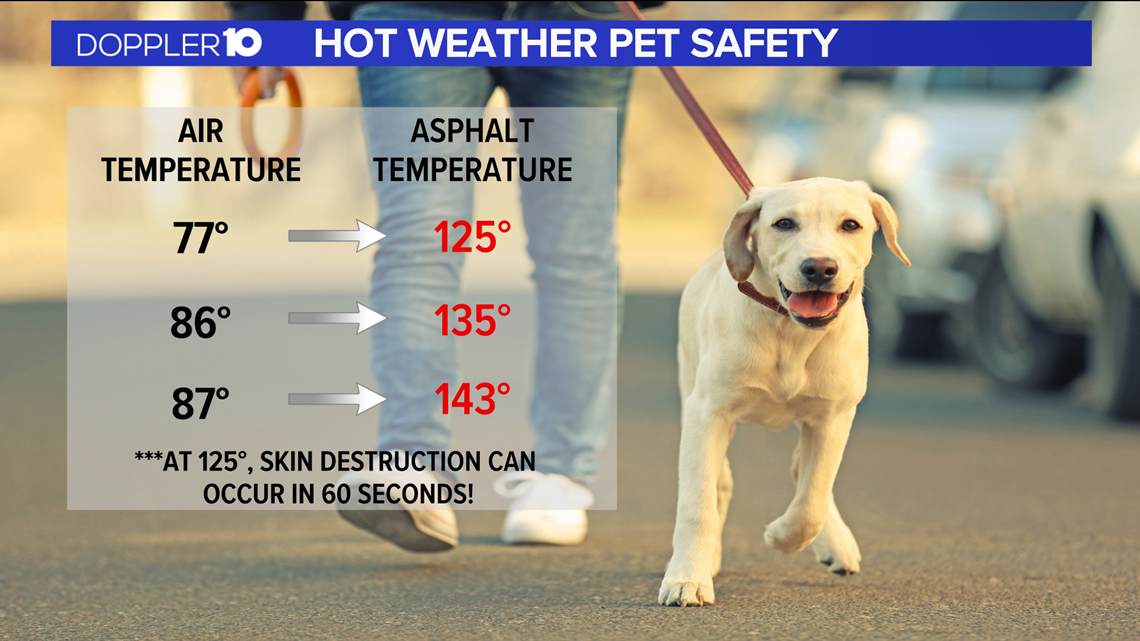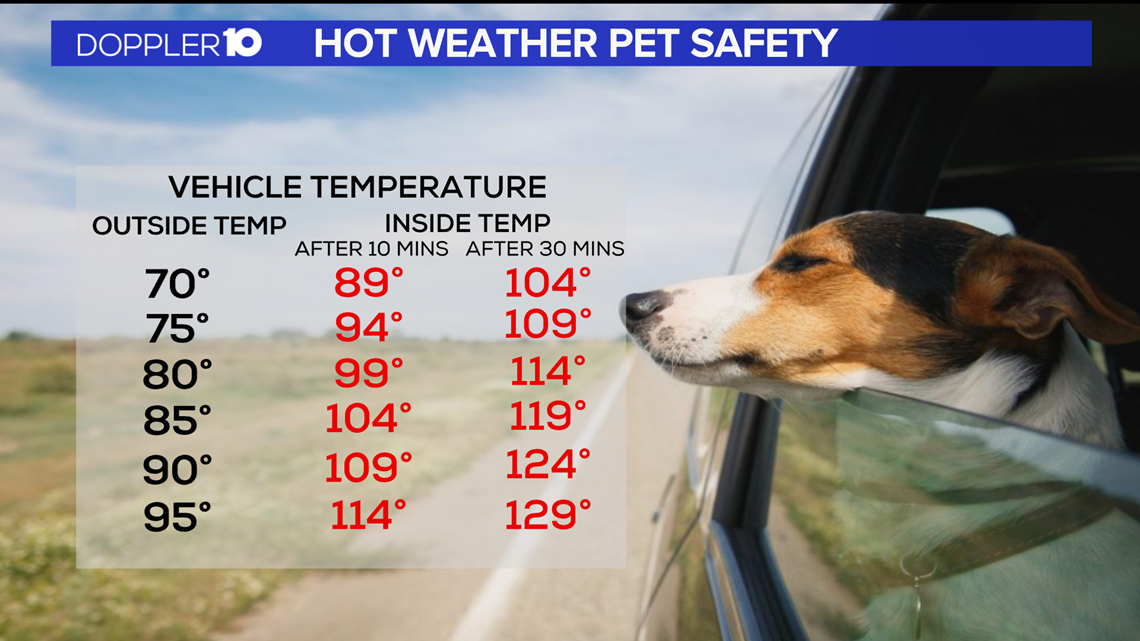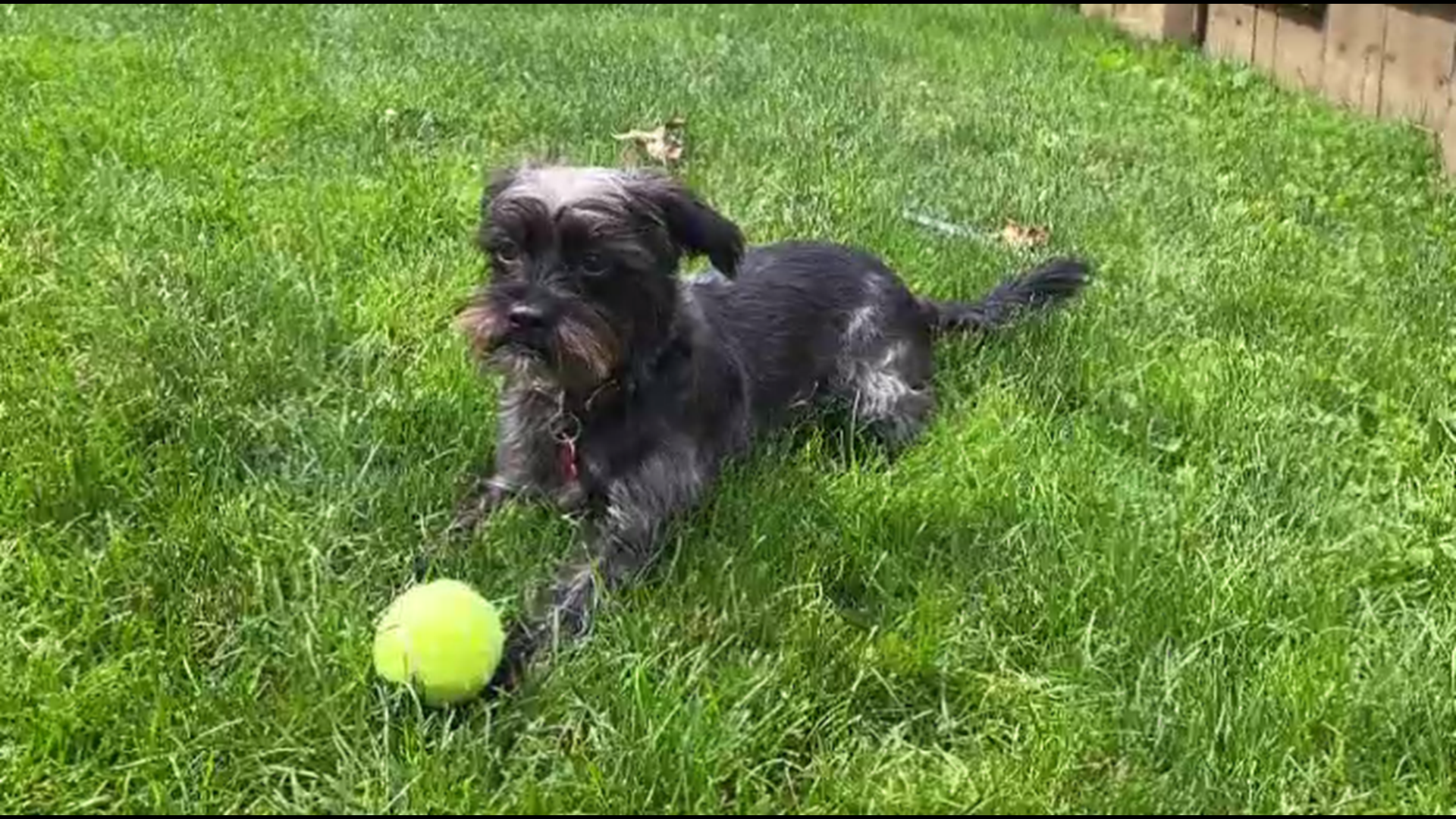COLUMBUS, Ohio — Summer is right around the corner and soon we'll all be spending more time outdoors.
Not only will people be out but also their furry, little friends. While it's great to get some exercise with your four-legged companion, you'll want to keep a closer eye on them with the warmer weather.
Dr. Edward Cooper, Professor, Clinical Small Animal Emergency and Critical Care at OSU Veterinary Medical Center said that you need to listen to your pets when you're outside with them during these warmer months.
"The big thing that we worry about is heat exhaustion or heat stroke," said Cooper.
Heat exhaustion occurs when your pet’s body temperature rises above a healthy range and they are unable to regulate their own body heat. This condition ranges from mild heat exhaustion, which can be treated at home, to severe heatstroke, at which point your pet can lose consciousness, run a high fever, or even experience organ failure.
Heat exhaustion or heat stroke can occur when your pets have been outside in the heat too long. This is important for pet owners to know when they take their usual stroll around the block.
"If they stop, they need to stop," said Cooper. "If they're panting really heavily and their saliva starts to get really thick and dry that suggests that they are becoming dehydrated."
Below is a list of common symptoms of heat exhaustion and heatstroke:
- Excessive panting or difficulty breathing
- Dehydration
- Excessive drooling
- Fever
- Bright red, gray, purple, or bluish gums
- Lack of urine
- Rapid pulse
- Muscle tremors
- Lethargy or weakness
- Vomiting
- Diarrhea and dizziness
Dr. Cooper said that if you suspect that your pet is very warm, you can do some things at home to help cool them down other than encouraging them to drink water.
"It is a good idea if you are worried about heat stroke to wet them down but you want room temperature or only slightly cooler water."
Cold water is too much of a shock to your pet's body and can actually compress the heat further into their bodies.
Pouring lukewarm or slightly cooler than lukewarm water on your pet, putting a fan in front of them and bringing them inside can help your pet cool down.
If your pet continues to pant or show signs of obvious distress or lethargy after being inside for several minutes, you will want to contact your vet immediately.
It is also best to avoid walking your pets during the warmest part of the day. Usually, the mornings and evenings will be better options than the afternoons.
You will also want to avoid any long walks on hot pavement surfaces.


Temperatures can easily get over 100 degrees when air temperatures are in the 80s. Walking on grassy, shaded surfaces will help your pets' paws from being potentially damaged.
Dr. Cooper also said that you should never leave your pet unattended in a vehicle for any amount of time.


The temperature inside of a vehicle can climb 20 degrees or more in a matter of just 10 minutes.
Dr. Cooper said the best thing you can do for your pet is to limit your time outside when it's hot, don't leave your pets inside the care and listen to your pet.

